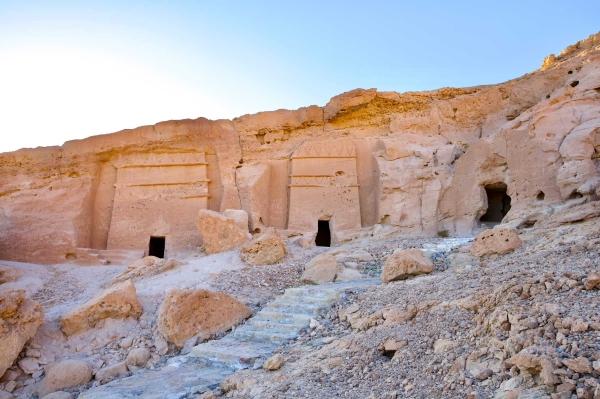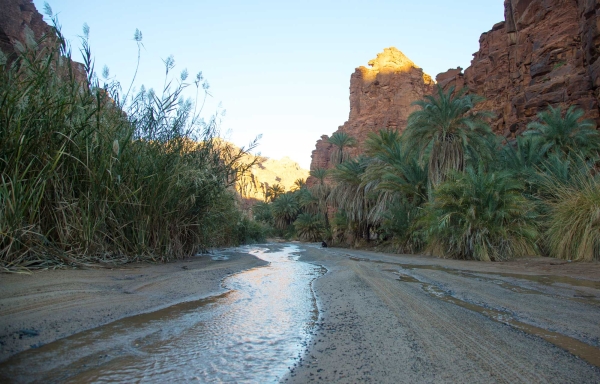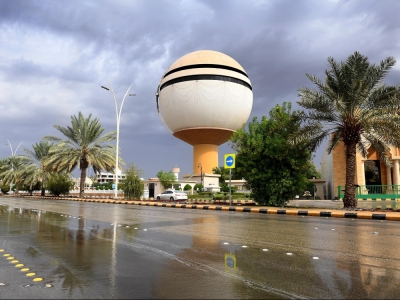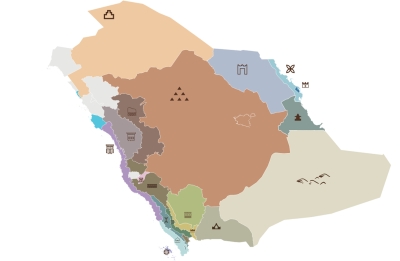


The visual icons in Tabuk Province are linked to the places located there which serve as architectural or natural symbols of the area. These icons can be used as symbols that refer to the province within the broader context of Saudi culture. Examples include:
Public art icons
- Tabuk City Gate Sculpture: Serving as the northern entrance to the city, it is situated in a roundabout with a diameter of two hundred m. Designed in an Islamic style, it consists of five gates symbolizing the identity and heritage of the province.
Rayat al-Tawhid Square: One of the prominent icons in the Tabuk Province, it is located on King Fahd Road between the buildings of the Emirate of Tabuk and its municipality. The square features a steel column bearing the Kingdom's flag, surrounded by twelve flagpoles, each standing twelve m tall, displaying the national flag.
Natural icons
- Wadi ad-Disah: A natural icon visually linked to the Tabuk Province, it is a part of Prince Mohammed Bin Salman Reserve.
Heritage icons
- Maghaer Shuaib or Mada'in Shuaib: These are tombs carved into the rocks in a geometric style, dating back to the Nabataean era, consisting of sixteen separate tombs.
- Tabuk Castle: Built in 1559, it is one of the most important historical stations on the Levant Hajj Route connecting the Levant with al-Madinah al-Munawwarah.
- Various palaces: Including al-Radhm Palace, al-Hamra Palace, King Abdulaziz Castle in Duba, and Tabuk Railway Station.
Related quizzes
Related articles

